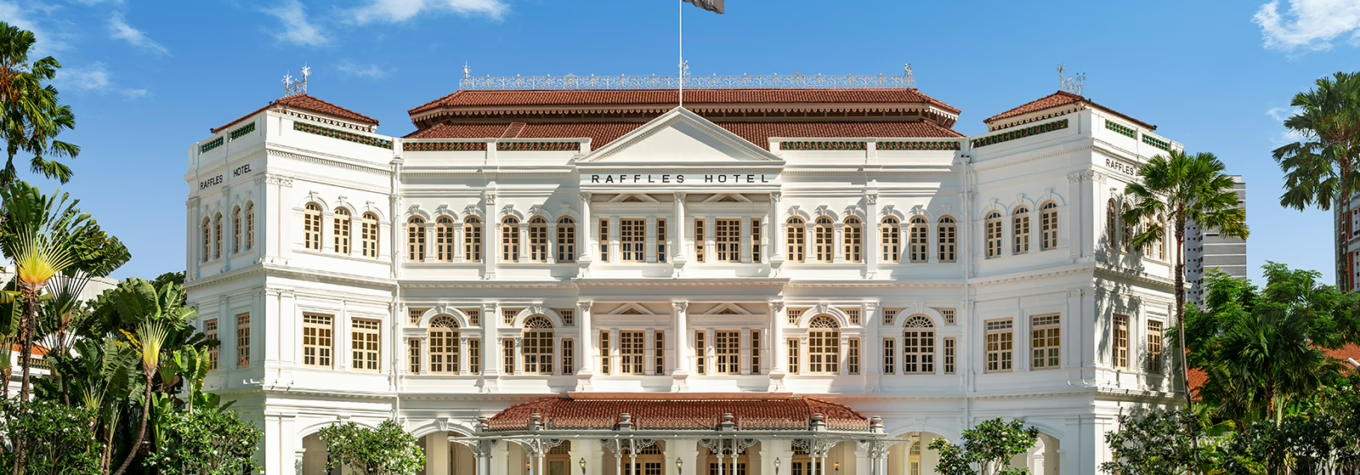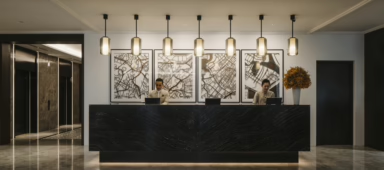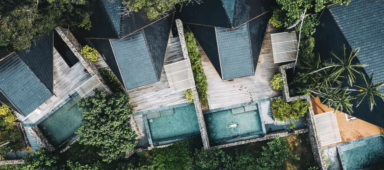So steeped in history, these are hotels you’ll never want to check out of
In Singapore, where modern buildings shoot up with breakneck regularity, the adaptive reuse of heritage buildings offers a refreshing counterpoint. Most recently, the opening of a clutch of hotels – or reopening, rather – late last year has showcased this architectural discipline where old buildings are restored to give them new purposes.
Among the city-state’s newest examples of adaptive reuse are Barracks Hotel, a former army barracks with a sublime infinity pool; Hotel Soloha, comprised of ornate shophouses in a hip stretch of Chinatown; and of course Singapore’s fabled Raffles Hotel, once a beachside residence. Reviving these buildings while preserving their rich backstories was laden with challenges.

According to the Urban Redevelopment Authority (URA), Singapore’s national planning body, work on conserved buildings must adhere to the three Rs – maximum retention, sensitive restoration and careful repair – and all original structural and architectural elements need to be retained, restored and in the case of new use, strengthened. Throughout the work, technical aspects and processes have to be documented, too.
It’s worth the effort, many would say, to ensure the survival of historic buildings while allowing people to enjoy them alongside the comforts of modern living. “In an ever-changing cityscape, it is important to preserve our country’s history and culture,” says Singaporean designer Leonard Lee, the Singapore and Tokyo regional managing director at Wilson Associates. The design firm is behind several hotel projects in Singapore, including Swissôtel The Stamford in the heart of the city.
According to Leonard, adaptive reuse not only updates heritage properties, but also restores historical architectural details to their former glory. “It provides people with the perfect platform and opportunity to relive the old-world charm and experiences of Singapore’s past.”
1. Raffles Hotel: A grand dame’s makeover
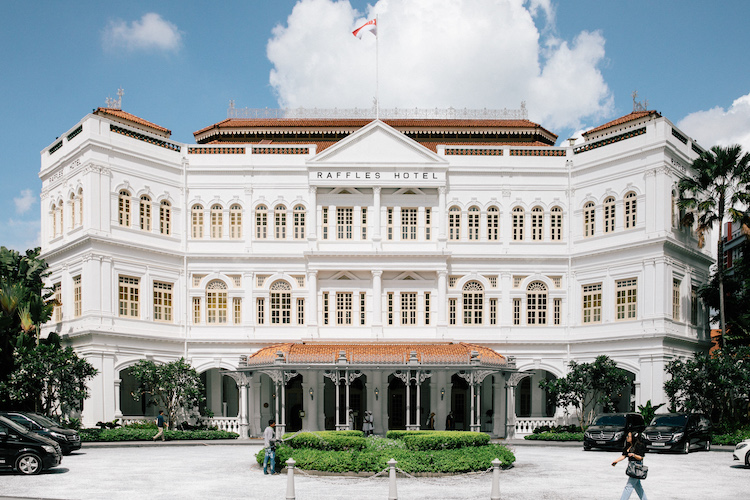
Given the fame of Raffles in Asia and beyond, any work on this historic hotel, declared a National Monument in its centennial year of 1987, would require extreme vigilance. The Raffles Hotel, after all, is a property that drew international glitterati and literati. To accommodate its growing popularity, the original beach house was replaced in 1899 with the distinct Late Victorian Italianate Revival-style central building that still stands today.
“The history of Raffles Hotel is very unique,” says Leslie Danker, resident historian at the hotel. “Singapore was administered by the British and Raffles became the meeting place for many of them. The saying among them was ‘We’ll meet at Raffles.’ They often gathered here for drinks, fancy-dress parties, dancing and even roller-skating.”
In 2017, the hotel closed for the most extensive renovation in its history, reopening in August 2019 even more resplendent thanks to a makeover by New York-based Champalimaud Design. Two years might seem like an eternity to close a hotel with just 115 suites (up from 103), but the refit presented numerous challenges since the designers were mindful not to dilute the historical DNA of the heritage property.
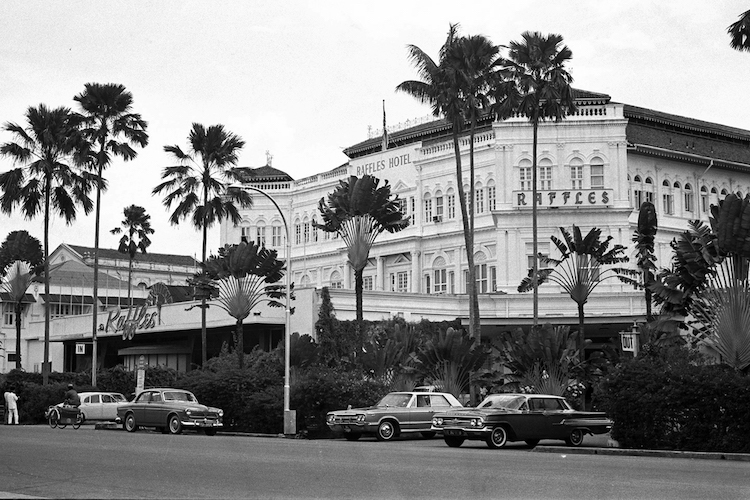
“The client wanted us to create a bridge that honours the property’s heritage and pulls its legacy forward,” says Jon Kastl, partner at Champalimaud Design. “Our design vision was focused around paring back and brightening the spaces within the hotel and, at the same time, using contemporary and elevated touches to amplify their beauty.” Jon explains that, in addition to bringing Raffles up to date, creating more public spaces was another objective of the refurbishment. “This in turn would create more touch points for visitors to engage with the property.”
The work ranged from the mundane (scraping off old paint and replacing it with emulsion that lets the walls breathe) to the jaw-dropping (installing an 8,000-crystal Czech chandelier in the lobby). The lobby as a whole was opened up, part of a push to create more social spaces, with strategically placed screens that resemble the old hotel gates to create discrete sections.
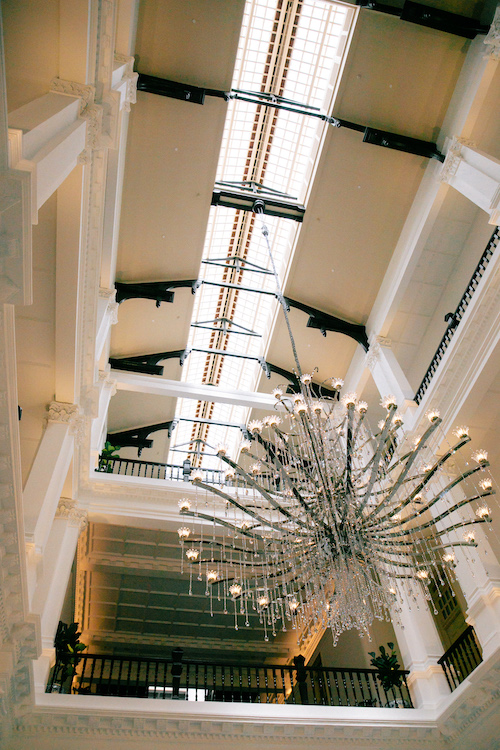
The Tiffin Room restaurant has been beautified by racks of vases and vintage tiffin boxes, while the Writers Bar, previously little more than a counter by the lobby, now has its own dedicated, enclosed home. Guests can also look forward to new restaurants from star chefs Anne-Sophie Pic, Alain Ducasse and Jereme Leung.
Other changes are less obvious but have quietly improved the experience. In the rooms, the floorboards were removed, restored and soundproofed, so guests will no longer hear the creaky floor or the clicking of heels in the rooms above. New double-glazed windows further dampen sounds that come from outside.
It wasn’t all smooth sailing, though. The architects encountered an unexpected obstacle while redesigning one of the presidential suites. “We discovered there was a structural column in one of the suite’s rooms – something neither the client nor our studio knew was there!” Jon explains. “The column didn’t work with our plans for the space and redesigning the room wasn’t an ideal option. After some back-and-forth it was decided that the column would be removed and the architects would install a beam in its place.”
2. Hotel Soloha: Global elements converge in Chinatown
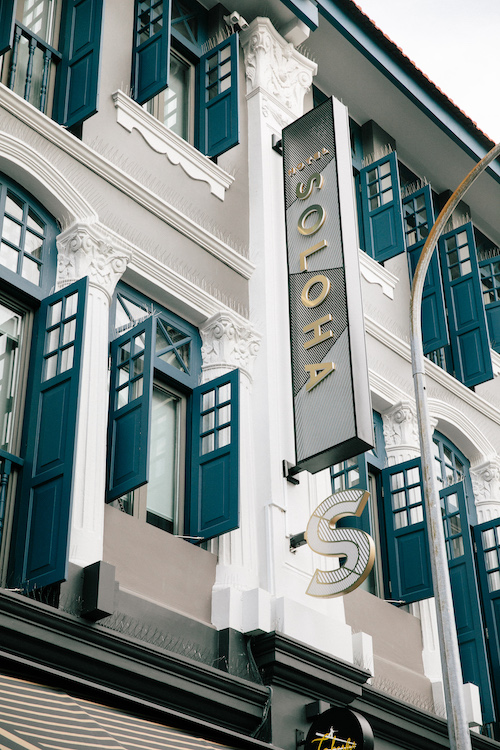
The lively Chinatown district has long drawn visitors for its mix of rich architecture and culture as well as buzzing nightlife. It’s here, in trendy Keong Saik, that the 45-room Hotel Soloha opened in August 2019. Occupying a row of refurbished shophouses with indigo blue shutters, white windowsills and stately Corinthian columns, the hotel boasts fun interiors that reflect its design theme of urban jungle chic.
Besides tropical prints, bright colours, neon signs, murals, moody lighting and marble bathrooms with rain showers abound. Plenty of works by local artists Ethrisha Liaw and Danielle Tay also grace the lift and guestrooms.
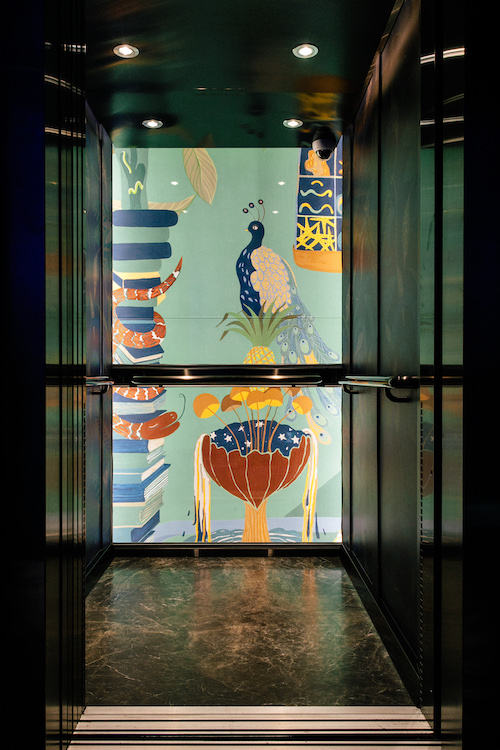
The exact origins of the property are a little murky, but it was the site of the Chinatown Hotel for 25 years, and was a residential block before that. “Having a hotel in a historic building allows guests to experience Singapore beyond just mere sightseeing,” says Josh Hu, Hotel Soloha’s founder.
“They can stay in a living, breathing piece of history. We have preserved the exterior of the original shophouse but completely transformed its interior to pay tribute to the internationalism, tastefulness and chic modernism that the Keong Saik neighbourhood represents.”
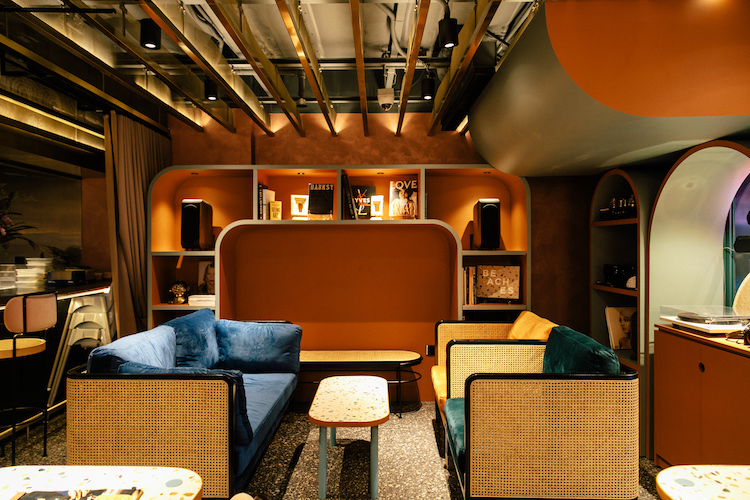
Josh was inspired by the artistic cosmopolitanism of Omotesando and Shibuya in Tokyo, as well as their small buildings, narrow alleyways, surreal streetscapes and strong art and graphic design culture. “As Hotel Soloha was our first hotel, we were eager to establish a strong brand and design concept,” he shares.
“We were looking to create a hip, vibrant and high-end hotel for the young and the young-at-heart.” As such, Josh explains, a great deal of investment went into touches like in-room smart panels, technology, art and décor.

But before all that came the practical aspects of restoring heritage buildings. Josh and his team initially wanted to create a fully open reception and first-level façade – usually found in typical commercial units – but since the shophouses were originally residential dwellings, the URA advised them to retain the covered shopfront.
This impacted what could be done with the façade, windows, doors and original walls, forcing the designers to develop ideas around these protected elements. The original timber floors had to be kept, too, so learning how to adequately soundproof the guestrooms was a challenge. The team had to create multiple mock-up rooms before they discovered the winning formula.
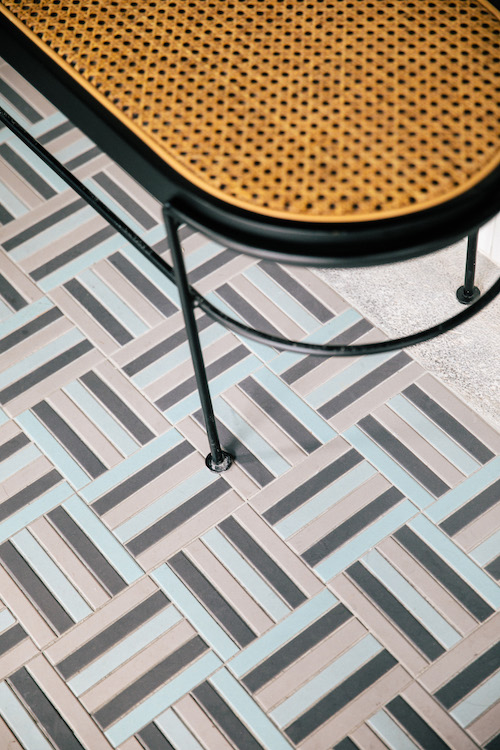
“We had to create bespoke pieces and fittings for each individual room based on the configurations of each allocated space,” Josh says. The end result is a truly charming property with a sophisticated, traditional exterior that belies the riot of colour and design inside.
3. Barracks Hotel: Cosy digs in a 115-year-old army camp
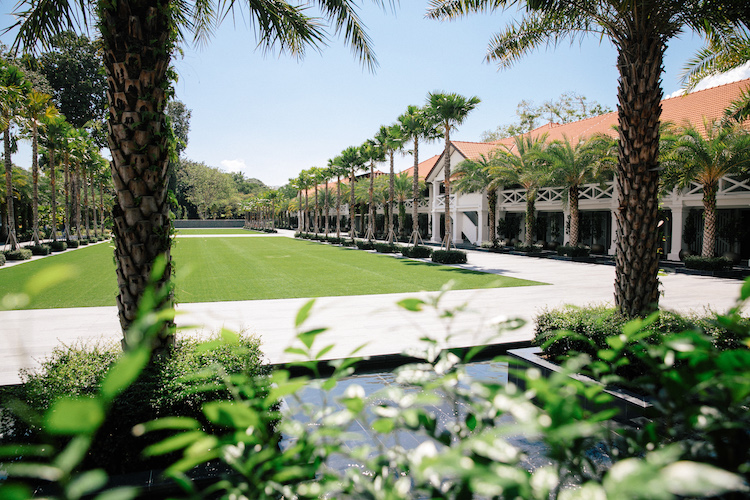
Singapore’s military past emerges at the Barracks Hotel, which opened in Sentosa last December. It occupies the former Blakang Mati Artillery Barracks, originally constructed in 1904 and used by the British artillery unit. When Britain withdrew its forces from Singapore a few years after independence in 1965, the barracks became a training ground for the Singapore Armed Forces and later a tourism office.
In 2014, the Far East Organization was awarded the land for development and has since launched three hotels on the site – the Barracks follows Village Hotel and the Outpost Hotel, both of which opened in April last year.
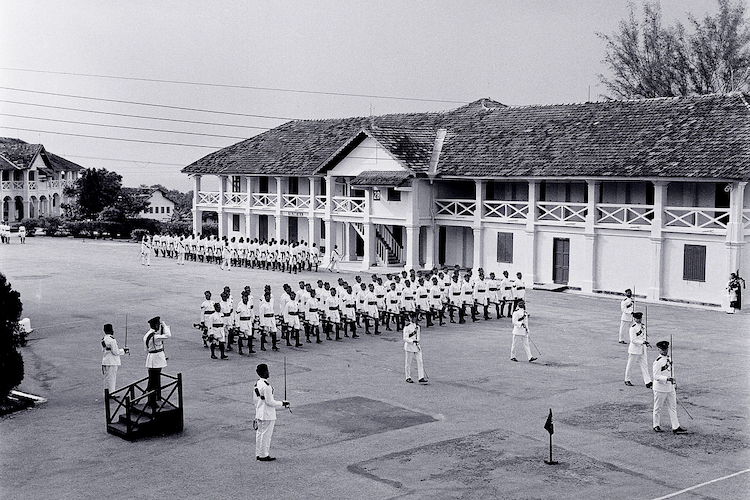
Inside the Barracks, past and present co-exist in style with the careful restoration of the property’s structure and decorative features. The URA’s regulations shaped much of the way forward for the hotel’s construction, explains Laurence Liew, the Barracks’ architect and director of Arc Studio Architecture + Urbanism. “The historical significance of the site was an excellent starting point for design,” he shares.
“Earthy tones and dark timber convey a rustic feel, reminding guests that they are in an old military outpost”
New structures were introduced in a manner sensitive to the scale and proportions of the existing buildings, along with new materials that were compatible in appearance and feel with the old. “This way, the original barracks’ look and character keep their place at front and centre.”
The interior design, done by KKS International, explores a similar theme of timelessness. “In order to bring back the early days’ atmosphere, the overall mood remains cosy with warm lighting in both public areas and guestrooms,” says managing director Kunio Iwata. “Natural sunlight plays a big role in the design as well in order to brighten up the existing conserved building.”
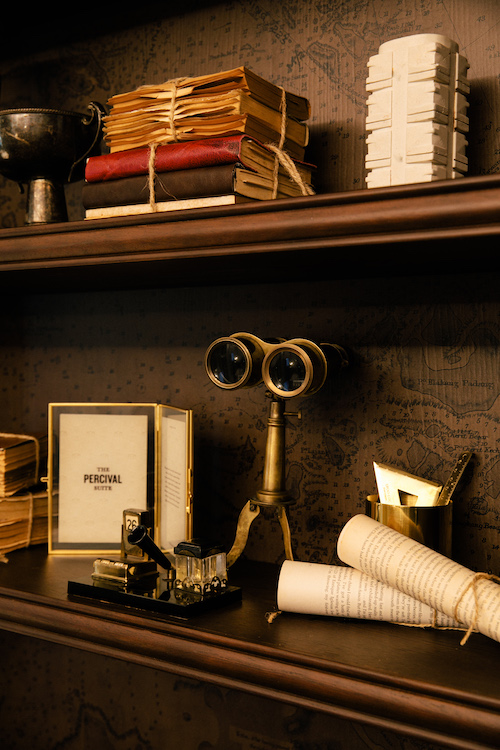
Earthy tones and dark timber convey a rustic feel, reminding guests that they are in an old military outpost. As part of the aesthetic, leather armchairs and sofas, camping chairs and aged lanterns feature throughout the property. White paint and stone lighten the ambience, while wood accents in the guestrooms as well as stylish marble bathrooms add modern twists to all of these reminders of the past.
Surrounded by these markers of timeless sophistication, it’s easy to see the success of Laurence’s architectural vision: “The Barracks Hotel serves as an effective conduit for linking the past, present and future.”
Malaysia Airlines flies 56x weekly between Kuala Lumpur and Singapore. To book a flight, visit malaysiaairlines.com.
